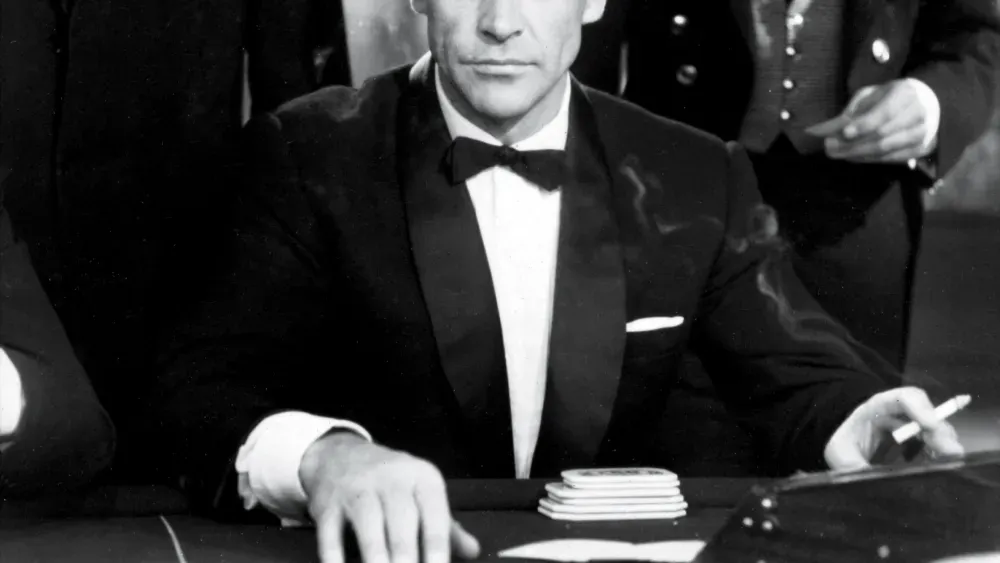The Timeless Need for Grounded Masculine Archetypes in an Age of Directionlessness
The 21st century lacks a unifying mythos. Political polarization, various crises, and digital alienation have eroded shared narratives, leaving audiences adrift.

In 1958, Paul Newman strode onto the screen in Cat on a Hot Tin Roof, embodying a new paradigm of American masculinity—a bruised idealist grappling with inherited privilege and moral rot. Unlike John Wayne’s unyielding frontier patriarchs, Newman’s Brick Pollitt resonated because he channeled postwar America’s existential doubts while retaining a magnetic core of integrity. Today, as men face plummeting rates of college enrollment, rising suicide rates, and a cultural landscape that often pathologizes traditional masculine virtues, the absence of comparable archetypes has left many adrift. The solution lies not in rejecting mid-century role models wholesale but in reclaiming their timeless virtues—honor, resilience, quiet competence—while excising their period-bound flaws.
The Enduring Power of Postwar Archetypes
John Wayne: The Uncompromising Code
John Wayne’s screen persona—epitomized in films like The Searchers (1956)—codified a masculinity rooted in stoicism, loyalty to community, and mastery over chaos. His characters operated under an unspoken ethical framework: protect the vulnerable, confront evil without hesitation, and bear responsibility silently[1][2]. This resonated in an America rebuilding global leadership post-WWII, offering a template for men navigating the pressures of Cold War societal expectations. Wayne’s heroes were flawed (often racially myopic), but their moral clarity provided psychological ballast—a quality sorely lacking in today’s equivocal cultural narratives[3][4].
Paul Newman: The Redemptive Antihero
Newman’s characters—from Hud (1963) to Cool Hand Luke (1967)—marked a seismic shift. Where Wayne embodied certainty, Newman specialized in men wrestling with moral ambiguity. His brilliance lay in portraying selfishness redeemed by latent nobility. As The Hustler’s Fast Eddie Felson, he channeled postwar disillusionment but retained an undercurrent of principled defiance. Critic Pauline Kael noted Newman’s rare ability to project “heroic frankness” even when playing rogues[5]. This duality—self-interest tempered by an innate moral compass—mirrored the 1960s’ cultural upheavals while offering a bridge between tradition and progress.
The Enduring Legacy of James Bond and the Case for a Modern Archetype
In 1962, as the Cold War reached its frostiest peak, a British spy emerged from the shadows of Ian Fleming’s novels to captivate global audiences. James Bond—suave, unflappable, and unapologetically British—became more than a cinematic icon; he crystallized a postwar vision of resilience, style, and moral certitude. Six decades later, as the world grapples with fragmented identities, geopolitical instability, and a crisis of collective purpose, the absence of such archetypes is palpable. While the traditional Bond—with his martinis, misogyny, and colonial undertones—may no longer fit our zeitgeist, the cultural vacuum he leaves behind underscores a pressing need: society urgently requires modern iterations of his aspirational grit, adaptability, and mythic clarity.
The Contemporary Vacuum
The Collapse of Shared Codes
Modern media oscillates between two extremes: hyperviolent antiheroes (Walter White in Breaking Bad) and infantilized man-children (Andy Samberg’s Brooklyn Nine-Nine roles)[6][7]. Both reject the quiet, grounded masculinity that Wayne and Newman symbolized. A 2024 National Research Group study found 68% of young men feel pop culture either mocks traditional male virtues or reduces them to toxic caricatures[8]. This vacuum exacerbates real-world crises: male suicide rates have tripled since 1980, while 41% of young men now identify as “politically disengaged”—a 22% rise from 2010[9][10].
The False Choice: Regression vs. Rejection
Current discourse often frames masculinity as a binary—either retreat into atavistic “alpha” posturing or embrace a formless, apologetic identity. Neither satisfies. The former ignores Newman’s lessons about growth; the latter dismisses Wayne’s emphasis on duty. As Tristan Bridges observes, healthy masculinity requires “standing for principles larger than oneself”—a concept absent from both online extremists and corporate DEI trainings[11].
Reclaiming the Archetype
Core Virtues, Modern Contexts
The Wayne/Newman model’s viability hinges on adapting its ethical core to 21st-century challenges:
- Steadfastness Without Stagnation
Wayne’s Ethan Edwards (The Searchers) upheld familial duty despite personal demons. Today, this translates to men anchoring themselves in roles as fathers, mentors, and community stewards—not out of obligation, but as a conscious choice against societal fragmentation. Programs like Big Brothers Big Sisters report a 40% enrollment spike when framing mentorship as “building legacies” rather than charity[12]. - Integrity Over Image
Newman’s characters rejected performative machismo. Cool Hand Luke’s defiance of arbitrary authority—while flawed—modeled conviction rooted in self-respect. Modern equivalents exist in figures like David Goggins, whose emphasis on inner discipline over external validation revitalizes traditional perseverance[13]. - Redemptive Responsibility
Newman’s Hud Bannon began as a selfish rancher but ultimately shouldered responsibility for his community. Contemporary narratives need heroes who evolve past initial failures—akin to Yellowstone’s John Dutton, flawed yet committed to preserving generational stewardship[3:1].
Case Study: Revitalizing the Archetype
Military Veterans as Modern Exemplars
Post-9/11 veterans increasingly fill the Newman/Wayne void. Organizations like Team Rubicon channel military discipline into disaster relief, blending Wayne’s tactical rigor with Newman’s redemptive arc. CEO Jake Wood frames service as “rebuilding purpose through action”—a mantra that’s drawn 150,000 volunteers since 2010[12:1].
Cinematic Resurgence
Films like Devotion (2022) and The Covenant (2023) revive the Wayne tradition of honor-bound duty while incorporating Newman-esque emotional depth. Devotion’s Jesse Brown, the first Black naval aviator, embodies Wayne’s courage while confronting systemic racism—proving traditional virtues transcend era-specific limitations[2:1].
Case Study 2: The Bond Archetype: A Mirror of Mid-Century Aspirations
Bond’s mid-century rise coincided with Britain’s reckoning with its diminished imperial stature. As the nation navigated postwar austerity and decolonization, Bond offered a fantasy of renewed global influence. His tailored suits, technological gadgets, and unshakeable confidence projected a “brand of Britishness” that blended tradition with modernity[14][15]. The films’ exotic locales and high-stakes espionage narratives transformed the spy genre into a vehicle for soft power, repackaging Britain as a sophisticated, technologically adept player on the world stage[14:1][16].
Crucially, Bond’s appeal lay in his duality: he was both a relic of empire and a harbinger of globalization. His missions often pitted Western individualism against Soviet totalitarianism, reflecting Cold War anxieties. Yet his globe-trotting adventures—funded by MI6 but fueled by personal agency—resonated with audiences craving escapism and moral simplicity[15:1][17]. As scholar Jaap Verheul notes, Bond became a “mobile signifier,” adapting to societal shifts while retaining core traits: loyalty to crown, mastery over chaos, and a veneer of invincibility[18].
Cultural Impact: From Masculinity to Mythmaking
Bond’s influence extended far beyond cinema. He redefined masculinity for the atomic age, merging physical prowess with intellectual sophistication. Unlike the brawny action heroes of later decades, Bond’s power derived from wit, gadgets, and social fluency—a “metrosexual” avant la lettre who could discuss Fabergé eggs before dispatching villains[19][20]. This duality made him a contested figure. To some, he embodied aspirational masculinity; to others, a problematic relic of patriarchy[21][22].
Yet his cultural permeation was undeniable. The “Bond girl” trope, though often reductively sexualized, introduced complex female allies and adversaries, while villains like Blofeld and Jaws became shorthand for existential threats[20:1][16:1]. Even Bond’s flaws—his cavalier relationships, colonial mindset—sparked debates that mirrored societal evolution. As the franchise evolved, so too did its engagement with gender, race, and power, albeit imperfectly[23][17:1].
As the MI6 motto declares, “The job is not done until the danger is gone.” The danger today is nihilism, fragmentation, and despair. We need archetypes who channel Bond’s resilience while embracing modernity’s complexities: heroes who navigate moral mazes with grace, unite disparate worlds, and remind us that agency—even in fiction—can inspire real-world courage.
The Bond archetype isn’t obsolete; it’s evolving. And in that evolution lies hope.
Conclusion: The Unbroken Chain
The “crisis of masculinity” stems not from virtues themselves, but their misapplication. John Wayne’s unflinching loyalty and Paul Newman’s redemptive grit remain vital—but must be divorced from mid-century limitations (racial insularity, emotional repression). Modern men need lodestars who combine Wayne’s backbone with Newman’s capacity for growth and Bond's suave and unshakeable confidence. As the late Newman himself noted: “A man with no demons is a man with no conscience.” The path forward lies not in discarding archetypes but refining them—forging men who stand firm in their convictions while remaining humble enough to evolve.
The alternative—a culture devoid of grounded masculine ideals—leaves men untethered, chasing extremes of aggression or apathy. By resurrecting the best of the old guard and tempering it with hard-won wisdom, society can offer the direction so desperately needed. The ghosts of Wayne and Newman remind us: strength without morality is brutality, but morality without strength is futility.
https://eprints.glos.ac.uk/14070/7/14070 Parry, Luke (2023) MA Res_From Butch Cassidy to Josey Wales Masculinity in the New Hollywood Western.pdf ↩︎
https://dokumen.pub/john-waynes-world-transnational-masculinity-in-the-fifties-9780292747470.html ↩︎ ↩︎
https://mro.massey.ac.nz/bitstreams/82eb248d-3325-49c4-be3f-df7cafd3d12f/download ↩︎ ↩︎
https://www.salon.com/2014/04/13/the_rights_twisted_symbol_john_wayne_and_conservatives_lost_dignity/ ↩︎
https://www.mensjournal.com/entertainment/paul-newman-the-man-who-defined-being-a-man-19691231 ↩︎
https://www.linkedin.com/pulse/masculinity-screen-ray-williams ↩︎
https://vbn.aau.dk/ws/files/334968603/The_Crisis_in_Masculinity.pdf ↩︎
https://slate.com/culture/2024/11/entertainment-hollywood-masculinity-male-role-models-movies-tv-social-media.html ↩︎
https://eige.europa.eu/publications-resources/toolkits-guides/gender-equality-index-2021-report/traditional-norms-masculinity?language_content_entity=en ↩︎
http://ilbolive.unipd.it/it/news/gender-violence-and-adherence-traditional-model ↩︎
https://gender.stanford.edu/news/crises-are-also-catalysts-when-gender-progress-challenges-traditional-masculinities-what-are ↩︎
https://www.salon.com/2024/01/06/yes-men-and-boys-are-in--but-traditional-masculinity-wont-help-them/ ↩︎ ↩︎
https://www.toughtotalk.com/post/beyond-john-wick-finding-real-male-role-models-in-today-s-world ↩︎
https://www.tutorchase.com/answers/a-level/history/discuss-the-cultural-impact-of-the-james-bond-film-franchise-on-british ↩︎ ↩︎
https://www.bbc.com/culture/article/20221004-bond-and-the-beatles-1962-and-the-day-that-changed-britain ↩︎ ↩︎
https://www.clubexpreso.ec/chic-op/james-bond-the-iconic-spy-who-shaped-pop-culture-and-action-cinema.html ↩︎ ↩︎
https://assets.ctfassets.net/4wrp2um278k7/5uGPhSStTqONznHbjCyd9l/67defe28c4bbc3500a4664f66cd11618/9789048532117_ToC_Intro.pdf ↩︎ ↩︎
https://www.reddit.com/r/JamesBond/comments/18e7v3l/will_007_remain_to_be_the_strong_masculine_male/ ↩︎
http://earok.net/sections/articles/game-dev/theory/james-bond-archetypes ↩︎ ↩︎
https://www.the-father-hood.com/article/james-bond-no-longer-fits-the-archetype-of-a-modern-hero-thats-why-theyre-making-him-a-dad/ ↩︎
https://digitalcommons.chapman.edu/cgi/viewcontent.cgi?article=1072\&context=e-Research ↩︎
https://www.library.universiteitleiden.nl/news/2021/09/james-bond-the-cultural-phenomenon---a-reading-list ↩︎





